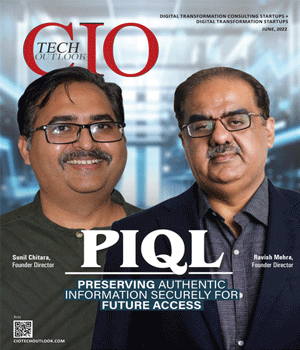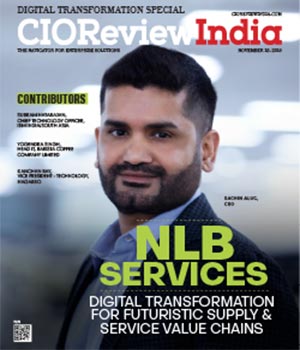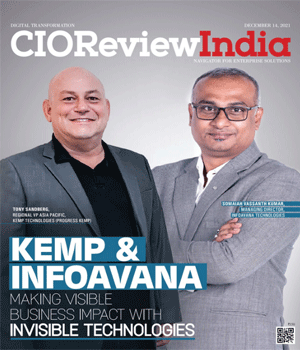
Five Challenges that Bothered CIOs the Most in 2021
Janifha Evangeline | Monday, 27 December 2021, 05:13 IST

Today, in the digital era, CIOs can deliver more business value than ever before. In the digital era, technology is playing an increasingly crucial role in not only shaping businesses but also helping them scale. However, there is a surge in demand for IT and services that include the following such as data analytics, cloud transformation, application innovation, which are strategic enablers for both digital experience platforms & digital transformation.
IT leaders are therefore under immense pressure to make sure that not only do their systems work seamlessly, and scale on-demand, but also hold up against growing regulatory demands & intensifying security threats.
In 2021, CIOs faced a multitude of challenges, and here is the list of the top five challenges they faced this year.
Managing the digital workforce & ensuring digital collaboration
Managing a distributed workforce has numerous challenges. For instance, Bring Your Own Device approach and unsecured home networks expose enterprises to threats. Also, parallelly providing access to employees to all relevant applications & resources leads to more complexity to IAM.
Eliminating the burden from the IT teams was one of the most pivotal parts of the CIOs 2021 plan. When everything depends on technology, making sure that the support executives are not overwhelmed and that the restrained resources are leveraged efficiently is significant for long-term success.
How and why does remote work thrive in a few organizations while it fails in other enterprises? According to Sean Grabber, it all comes down to three main components that include the three Cs such as communication, collaboration, & culture.
Back in 2015, company executives would decide to leave/abandon remote work if it didn't work out or give the expected result. However, the year 2020 left all organizations with no choice other than to take the plunge towards the swift transition to remote work.
Addressing security threats
Not just the technology but the methods of exploiting the technologies are evolving alongside. Hackers in recent years have changed their tactics, and owing to technological advancement these are only getting advanced but are not showing any good sign of slowing. Two of the biggest security challenges faced by CTOs were phishing & ransomware.
Though phishing is not a very new hacking tactic, the way it is being carried out has changed. Scammers today are making use of short messaging services (SMS) as well as phone calls for not only impersonating reputable sources but also trick consumers into divulging sensitive information. To fight this, IT leaders have to re-think their credential management and get a strong sense of security awareness across their enterprises.
Big data & Increased investment in edge computing
Although Big data was a buzzword for performing bigger things, making sense as well as implementing complex sets of data is a must for organizations today. According to a GE & Accenture report, eighty-eight percent of enterprises stated that big data is now a top priority.
For most enterprises today, data growth not inside the data center or outside the data center is a new reality. And nowadays, enormous amounts of data are generated from IoT smart devices, remote branches, as well as mobile devices. Gartner predicts that seventy-five percent of enterprise data will be generated and leveraged outside of the data center by the year 2025. The requirement of deploying computing power as well as storage capabilities at the network’s edge was one of the greatest challenges to CIOs in 2021.
Integrating Containerization with SaaS programs
The rise of the cloud has challenged how businesses implement the software, with most enterprises moving swiftly to embrace SaaS solutions that cater to very specific functionalities. Building/developing a single cohesive solution by means of integration is high on the priority list for all CIOs, due to the availability of a multitude of diverse applications. There is a rise in container adoption for simplifying the numerous processes of developing, shipping, as well as deploying SaaS solutions. Around four hundred and fifty-one research predicts that by 2022, the market size of application container technologies will reach USD 4.3 billion.
Rendering a perfect customer experience to users
While digital CX is the new battlefield in order to stay competitive, the responsibility of delivering a seamless customer experience falls equally on IT leaders. The implementation of digital services, as well as applications, has changed and evolved in order to become an unconscious extension of human behavior. This, in turn, has led to sky-rocketing of consumer expectations about the performance of applications and digital services.
The road ahead
Customers in the digital era are less tolerant and less forgiving of problems with digital services. According to one of the recent reports, a full ninety-six percent of customers base their loyalty on a positive customer experience. Furthermore, the 5G rollout will result in a surge in customer expectations as higher quality experiences and faster download speeds have now become possible. Lastly, brands investing in modernizing their customer experience by leveraging technologies such as AI/ML will emerge as industry leaders. As we head into 2022, what is definite is that we are in a crucial time of huge change for enterprises.
CIO Viewpoint
The Constantly Evolving Technology Landscape in...
By Janifha Evangeline
Navigating the Digitalization of Mining Industry
By Janifha Evangeline
How To Achieve An Effective Digital Transformation
By Yogendra Singh, Head-IT/SAP, Barista Coffee Company Limited
CXO Insights
No-code platforms: Enterprise-wide Adoption...
By Rahul Murthi, Director at Acies
Unleashing the Potential of IT in Engineering...
By Gyan Pandey, Head - Digital/CDO, Voltas
Low Code and Artificial Intelligence - The...



.jpg)

.jpg)





